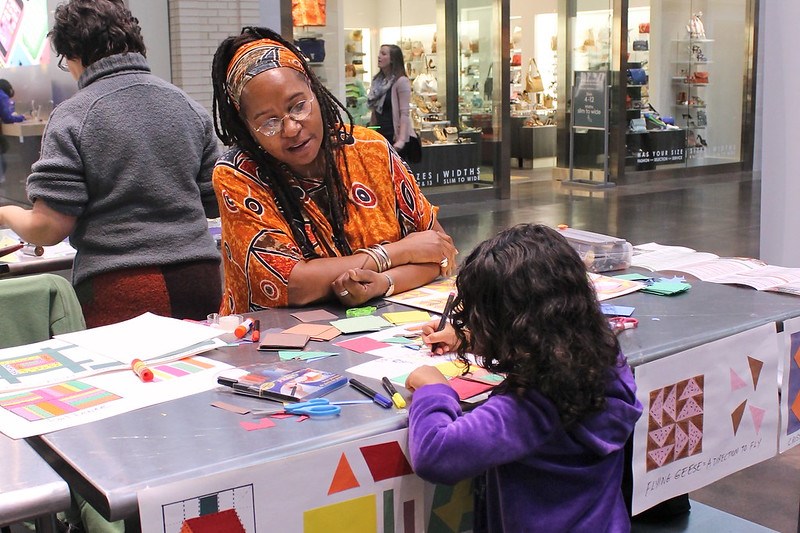- Sector Scan
PPP Data on Preserving Jobs in the Arts & Culture Sector
- Posted Jul 16, 2020
According to SBA data, a total of 5,713 nonprofit recipients classified as arts and culture organizations received $1.1 billion in PPP loans to support at least 117,805 jobs.

To date, Johns Hopkins University reports over 3,000,000 confirmed COVID-19 cases and over 130,000 deaths in the United States alone. On July 6, 2020, the loan program for businesses jumped to the front of the news cycle as the Small Business Association (SBA) released loan recipient data for the Paycheck Protection Program (PPP). Loan recipients ranged from luxury resorts and large restaurant chains to mom and pop shops and nonprofit institutions, which the SBA indicates supported more than 51 million jobs. The release of this data came after arguments between Steve Mnuchin, Secretary of the Treasury, and many media outlets that filed Freedom of Information Act (FOIA) requests to access PPP data as laid out in the legislation authorizing the PPP program.
So how did the nonprofit arts and culture sector fare in receiving PPP funds?
In parsing the data, limitations on identifying characteristics such as organization names and addresses associated with loans under $150,000 and the omission of specific loan amounts given to organizations receiving loans over $150,000 prevent a perfect accounting of distributions when compared to all nonprofit arts and culture organizations in the United States. However, there is enough information to look at PPP recipients in general across the sector.
In total, 5,713 nonprofit recipients classified as arts and culture organizations[1] received $1.1 billion in loans (average of $194,191 per organization) to support at least 117,805 jobs (22 on average per organization).[2] The SBA reported that over 85% of loans were for less than $150,000. For arts and culture nonprofits, that percentage was 80%. The following table shows the breakdown of arts and culture recipients receiving loans under $150,000.
Breakdown of Loans Under $150,000
| NAICS Sector | Loan Count | Avg. Loan $ | Total Loan $ | Avg. Jobs | Total Jobs | $ per Job |
|---|---|---|---|---|---|---|
| Performing Arts Organizations (7111-) | 1,968 | 34,390 | 67,680,347 | 8 | 14,666 | 4,615 |
| Theater Cos. (711110) | 762 | 37,021 | 28,210,000 | 7 | 5,304 | 5,319 |
| Dance Cos. (711120) | 180 | 36,905 | 6,642,926 | 8 | 1,377 | 4,824 |
| Musical Groups & Artists (711130) | 634 | 31,375 | 19,891,938 | 10 | 5,987 | 3,323 |
| Other Perf. Arts Cos. (711190) | 392 | 32,999 | 12,935,484 | 6 | 1,998 | 6,474 |
| Museums and Historical Sites (7121-) | 2,603 | 37,531 | 97,693,427 | 6 | 15,386 | 6,350 |
| Museums (712110) | 1,943 | 36,448 | 70,818,527 | 6 | 11,553 | 6,130 |
| Historical Sites (712120) | 307 | 32,357 | 9,933,631 | 5 | 1,484 | 6,694 |
| Zoos/Botanical Gardens (712130) | 125 | 58,018 | 7,252,206 | 9 | 1,041 | 6,967 |
| Nature Parks and Other (712190) | 228 | 42,496 | 9,689,064 | 6 | 1,308 | 7,408 |
| TOTAL (7111- and 7121-) | 4,571 | 36,179 | 165,373,774 | 7 | 30,052 | 5,503 |
In the Under $150,000 category, the average organization received about $36,000 to support 7 employees. These loans represent about 80% of the number of loans to arts and culture organizations, 15% of the dollars loaned to arts and cultural organizations, and about 26% of the jobs supported.
The following table shows the same analysis for organizations receiving loans over $150,000.
Breakdown of Loans Over $150,000
| NAICS Sector | Loan Count | Avg. Loan $ | Total Loan $ | Avg. Jobs | Total Jobs | $ per Job |
|---|---|---|---|---|---|---|
| Performing Arts Organizations (7111-) | 419 | 799,673 | 335,062,926 | 86 | 34,009 | 9,852 |
| Theater Cos. (711110) | 203 | 650,978 | 132,148,473 | 68 | 13,384 | 9,874 |
| Dance Cos. (711120) | 31 | 1,141,276 | 35,379,555 | 110 | 3,201 | 11,053 |
| Musical Groups & Artists (711130) | 105 | 906,595 | 95,192,428 | 106 | 10,319 | 9,225 |
| Other Perf. Arts Cos. (711190) | 80 | 904,281 | 72,342,470 | 96 | 7,105 | 10,182 |
| Museums and Historical Sites (7121-) | 723 | 842,291 | 608,976,490 | 81 | 53,744 | 11,331 |
| Museums (712110) | 534 | 810,866 | 433,002,566 | 77 | 37,768 | 11,465 |
| Historical Sites (712120) | 39 | 499,128 | 19,466,003 | 57 | 1,924 | 10,117 |
| Zoos/Botanical Gardens (712130) | 105 | 1,264,408 | 132,762,847 | 119 | 11,532 | 11,513 |
| Nature Parks and Other (712190) | 45 | 527,668 | 23,745,074 | 60 | 2,520 | 9,423 |
| TOTAL (7111- and 7121-) | 1,142 | 826,654 | 944,039,416 | 83 | 87,753 | 10,758 |
For organizations receiving loans over $150,000, Zoos, Botanical Gardens, and Dance Companies received the largest average loans to support the highest average numbers of jobs. Loans over $150,000 averaged $10,758 per job preserved while loans under $150,000 averaged $5,503 per job preserved.
Looking at the entire sector across the country is helpful to get a general understanding of the impact of PPP loans. However, thinking about the program in the context of financial impacts recognized by specific communities can help shed light on the scale of support of PPP loans.
REFERENCES:
[1]. North American Industry Classification System (NAICS) codes starting with 7111 (performing arts companies) or 7121 (museums, historical sites, and similar institutions).
[2]. For this analysis, for loans over $150,000 that were grouped into loan ranges, the values of the loans were calculated as the average value of loans in the particular range as determined by values supplied by the SBA in their report showing loan approvals through June 30, 2020. See https://www.sba.gov/sites/default/files/2020-07/PPP%20Results%20-%20Sunday%20FINAL-508.pdf


